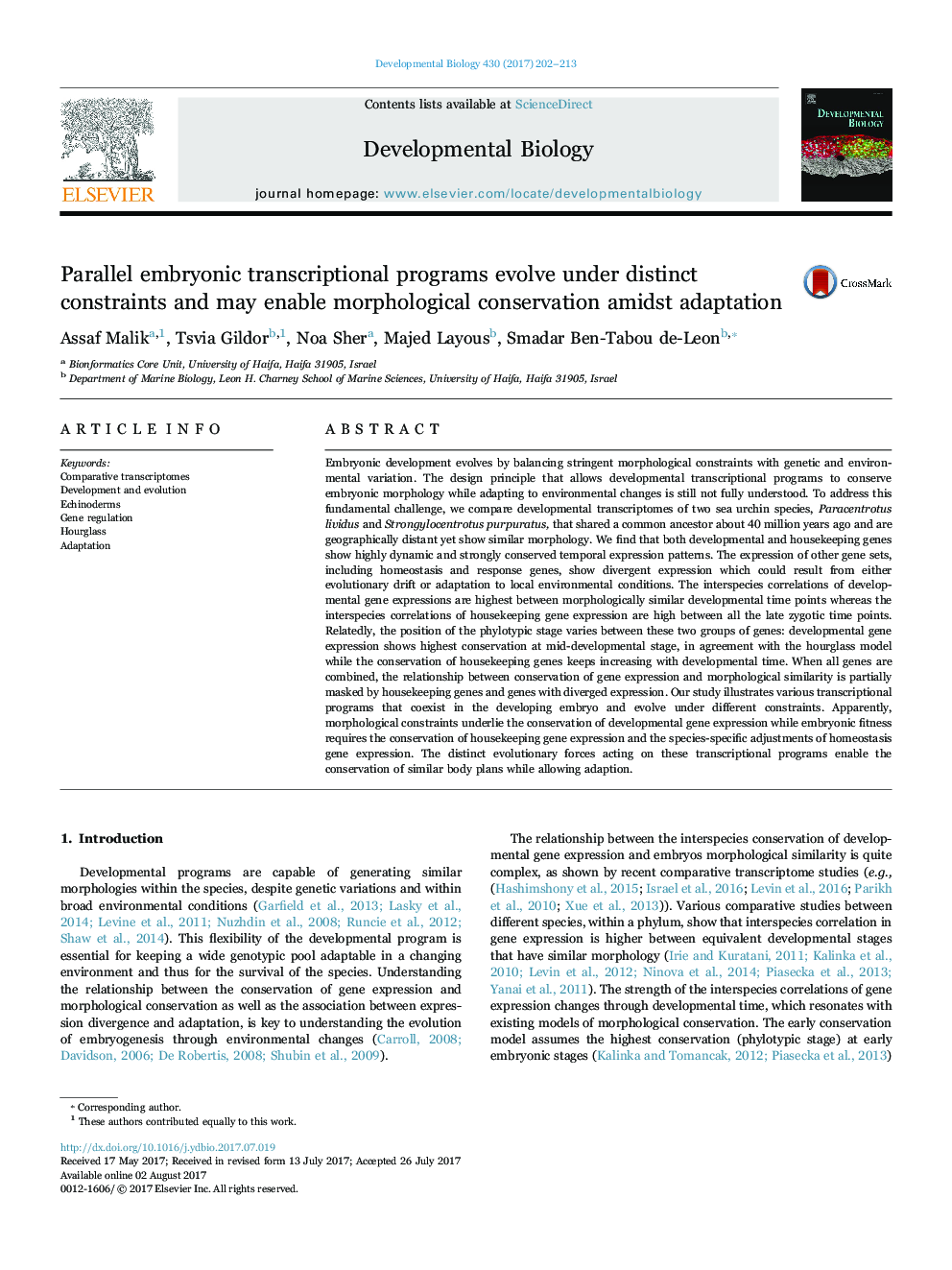| کد مقاله | کد نشریه | سال انتشار | مقاله انگلیسی | نسخه تمام متن |
|---|---|---|---|---|
| 5531828 | 1401816 | 2017 | 12 صفحه PDF | دانلود رایگان |
- Developmental transcriptomes of two closely related sea urchin species are compared.
- Developmental gene expression is highly conserved, probably underlying morphological similarity.
- Housekeeping gene expression is highly conserved possibly to support embryonic fitness.
- Some homeostasis genes show divergence which could support adaptation.
- The phylotypic stage position is different for developmental and housekeeping genes.
Embryonic development evolves by balancing stringent morphological constraints with genetic and environmental variation. The design principle that allows developmental transcriptional programs to conserve embryonic morphology while adapting to environmental changes is still not fully understood. To address this fundamental challenge, we compare developmental transcriptomes of two sea urchin species, Paracentrotus lividus and Strongylocentrotus purpuratus, that shared a common ancestor about 40 million years ago and are geographically distant yet show similar morphology. We find that both developmental and housekeeping genes show highly dynamic and strongly conserved temporal expression patterns. The expression of other gene sets, including homeostasis and response genes, show divergent expression which could result from either evolutionary drift or adaptation to local environmental conditions. The interspecies correlations of developmental gene expressions are highest between morphologically similar developmental time points whereas the interspecies correlations of housekeeping gene expression are high between all the late zygotic time points. Relatedly, the position of the phylotypic stage varies between these two groups of genes: developmental gene expression shows highest conservation at mid-developmental stage, in agreement with the hourglass model while the conservation of housekeeping genes keeps increasing with developmental time. When all genes are combined, the relationship between conservation of gene expression and morphological similarity is partially masked by housekeeping genes and genes with diverged expression. Our study illustrates various transcriptional programs that coexist in the developing embryo and evolve under different constraints. Apparently, morphological constraints underlie the conservation of developmental gene expression while embryonic fitness requires the conservation of housekeeping gene expression and the species-specific adjustments of homeostasis gene expression. The distinct evolutionary forces acting on these transcriptional programs enable the conservation of similar body plans while allowing adaption.
Journal: Developmental Biology - Volume 430, Issue 1, 1 October 2017, Pages 202-213
